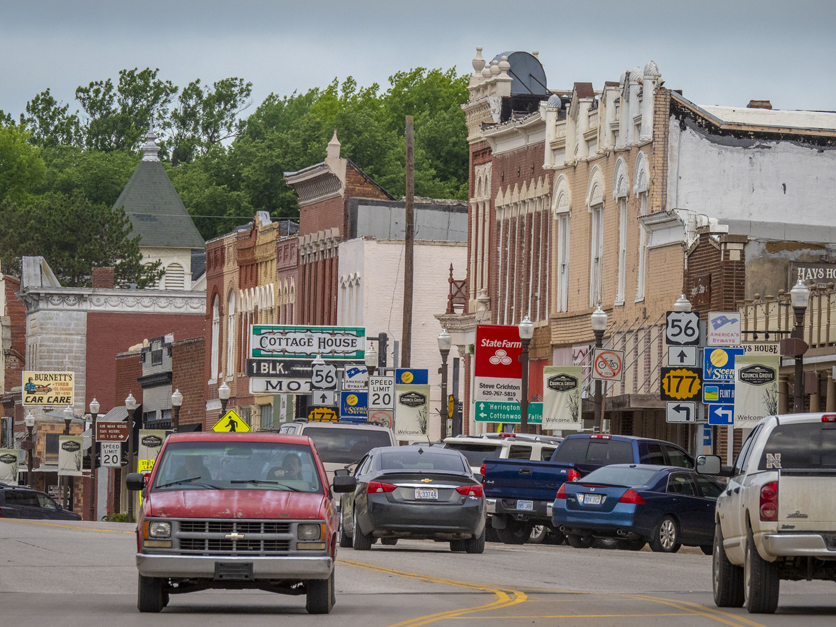Rural areas struggling with low commodity prices and a stalled farm bill are getting over $4 billion in new USDA grants and low-interest loans for new or upgraded water and sewer systems, electric power lines, and other essential infrastructure.
When presidential candidate Donald Trump’s promise of a $1 trillion national infrastructure program met budget reality in Washington, his $1 trillion morphed into just $200 billion in potential federal seed money. Now at best, a sharply divided, spending-averse Congress might not authorize even this pared-back $200 billion for another year or two.
Still, the $4 billion earmarked for rural America is a nice down payment. The new billions for infrastructure are already signed, sealed and being delivered by USDA. This federal infusion is guaranteed regardless of whether it’s payback for rural America’s support at the polls in 2016, partial repayment for the administration’s trade wars dragging commodity prices ever lower, or simply recognition that rural infrastructure spending is urgent and long overdue.
Even while USDA is writing new checks for rural infrastructure projects, congressional action has been slow and uncertain. Four months ago, the Senate Environment and Public Works Committee (EPW) voted 21-0 to send the bipartisan, bicameral 452-page America’s Water Infrastructure Act, S. 2800, to the full Senate. The House passed a similar bill in June in a decisive 408-2 vote. Earlier this month, House and Senate leaders announced an agreement on an updated America's Water Infrastructure Act, S. 3021, but further action may need to wait.
The bill’s delay comes despite its ambitious stated purpose: “To meet the nation’s water infrastructure needs, including navigation, flood risk management, ecosystem restoration, drinking water, and clean water infrastructure, while also expanding water supply and water storage capacity.”
The delay also comes even though EPW Chair John Barrasso, R-Wyo., insists that “America needs comprehensive water infrastructure legislation that will cut Washington red tape, create jobs, and keep communities safe.” Barrasso says the bill will help rural communities and cities and “will grow the nation’s economy and speed up important projects. Congress should pass this bipartisan consensus bill and send it to President Trump for his signature.”

EPW Committee Chair John Barrasso, R-Wyo.
EPW ranking member Sen. Tom Carper, D-Del., is equally insistent. He has welcomed the legislation as “a compromise on a major water infrastructure bill that will create good-paying jobs here at home, incentivize businesses to buy and use American products.” The bill, he said, “invests in critical infrastructure like our country’s ports and waterways, and expands our investments in drinking water for the first time in more than two decades.”
Showing how far-reaching the legislation is, the bill requires that for public water system projects “all of the iron and steel products used in the project are produced in the United States.”
Despite delays, Barrasso remains confident. Welcoming a House agreement to support his water infrastructure bill, he said earlier this month that “By reaching this bipartisan agreement, Wyoming and the nation will see upgrades, reforms, and new initiatives that deliver on the promise of rebuilding our aging water systems. This agreement assures that the long-sought goal of major infrastructure legislation under the Trump administration will become law this year.”
So, while the rest of the U.S. could have years to wait for national infrastructure legislation to be finalized, rural areas are already getting some of their needs met, thanks to the latest USDA infusion of funds for grants and loans.
Interested in more news about the farm bill, trade issues, pesticide regulations and more hot topics?
Sign up here for a four-week Agri-Pulse free trial. No risk and no obligation to pay.
Drawing on a record $5.2 billion that Congress authorized in March for USDA water and wastewater infrastructure loans and grants, USDA opened its floodgates wide in July when Assistant to the Secretary for Rural Development Anne Hazlett announced a new $4 billion for rural communities and water districts. This Water and Waste Disposal Loan and Grant funding is earmarked for communities with up to 10,000 residents to maintain, modernize or build rural water and wastewater systems.
Announcing an initial approval of $164 million for 54 projects in 24 states, Hazlett explained that “All people – regardless of their zip code – need modern, reliable infrastructure to thrive, and we have found that when we address this need, many other challenges in rural places become much more manageable.”

Anne Hazlett, USDA
One piece of the new funding goes to Greenview, Ill. The town’s 778 residents will benefit from a $4.9 million loan and a $3.7 million grant “to construct a wastewater collection and treatment facility” designed to reduce health hazards caused by private septic or aeration systems emptying effluent into drainage fields.
Another winner is Wadesboro, N.C., population 5,841. It gets a $706,000 loan and an $815,000 grant to improve its water distribution system. The town will install 7,000 linear feet of water main and 11 hydrants to serve the town’s 2,012 residential users and dozens of commercial, industrial and institutional users.
In a second round of USDA funding in August, with $124 million for water and wastewater infrastructure projects in 23 states, Louisiana’s Alberta Water System will use a $164,000 loan and a $1.5 million grant to construct an additional well, install new meters, and add other equipment to serve its 1,858 customers.
Another August beneficiary is McLouth, Kan., getting a $1.3 million loan to upgrade the city’s water infrastructure, replacing old pipes and meters to improve service to the town’s 860 residents.
Most recently, on Sept. 19, USDA’s Hazlett announced $398.5 million in new loans to improve rural electric service in 13 states from Arkansas to New Mexico. She said this is part of USDA’s commitment “to being a strong partner in keeping our rural communities connected to this essential infrastructure.”
This latest support from Rural Development’s Electric Infrastructure Loan Program will go to providers including:
- Southside Electric Cooperative in Virginia, using a $47.7 million loan to add 2,578 customers to its current 56,00, build 136 miles of line, and make other system improvements.
- Marshall County REMC in Indiana, using a $9.5 million loan for building 11 miles of line and adding smart grid technology to improve service to its 7,200 customers.
- San Miguel Power Association in Colorado, using an $11 million loan to build 205 miles of line and add smart grid equipment to improve service to its 13,473 customers.
Along with funding new infrastructure projects across rural America, USDA is also focused on streamlining regulations “to increase access to capital in rural areas.” Both initiatives result from the Interagency Task Force on Agriculture and Rural Prosperity that President Trump launched with an April 2017 executive order “to identify legislative, regulatory and policy changes that could promote agriculture and prosperity in rural communities.”
The Task Force, chaired by Agriculture Sec. Sonny Perdue, issued its initial Report to the President of the United States from the Task Force on Agriculture and Rural Prosperity in January. Perdue concluded that implementing the Task Force’s more than 100 recommendations for federal action is needed because “While other sectors of the American economy have largely recovered from the Great Recession, rural America has lagged in almost every indicator.”
For more news, go to www.Agri-Pulse.com


